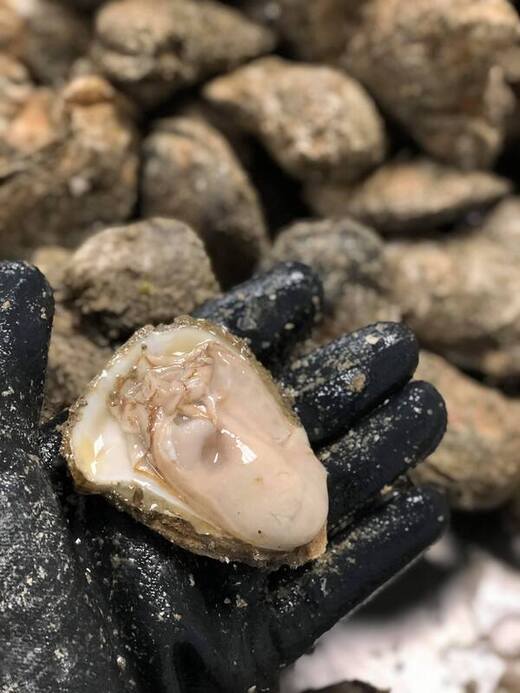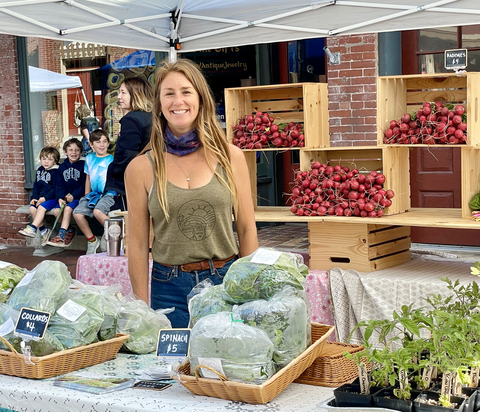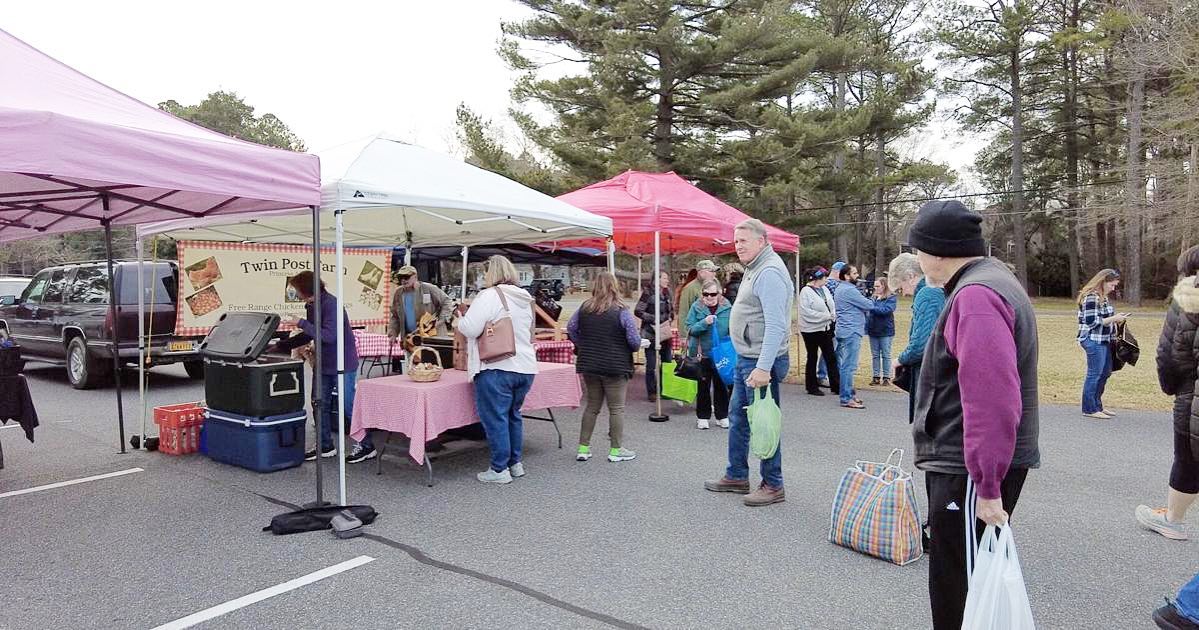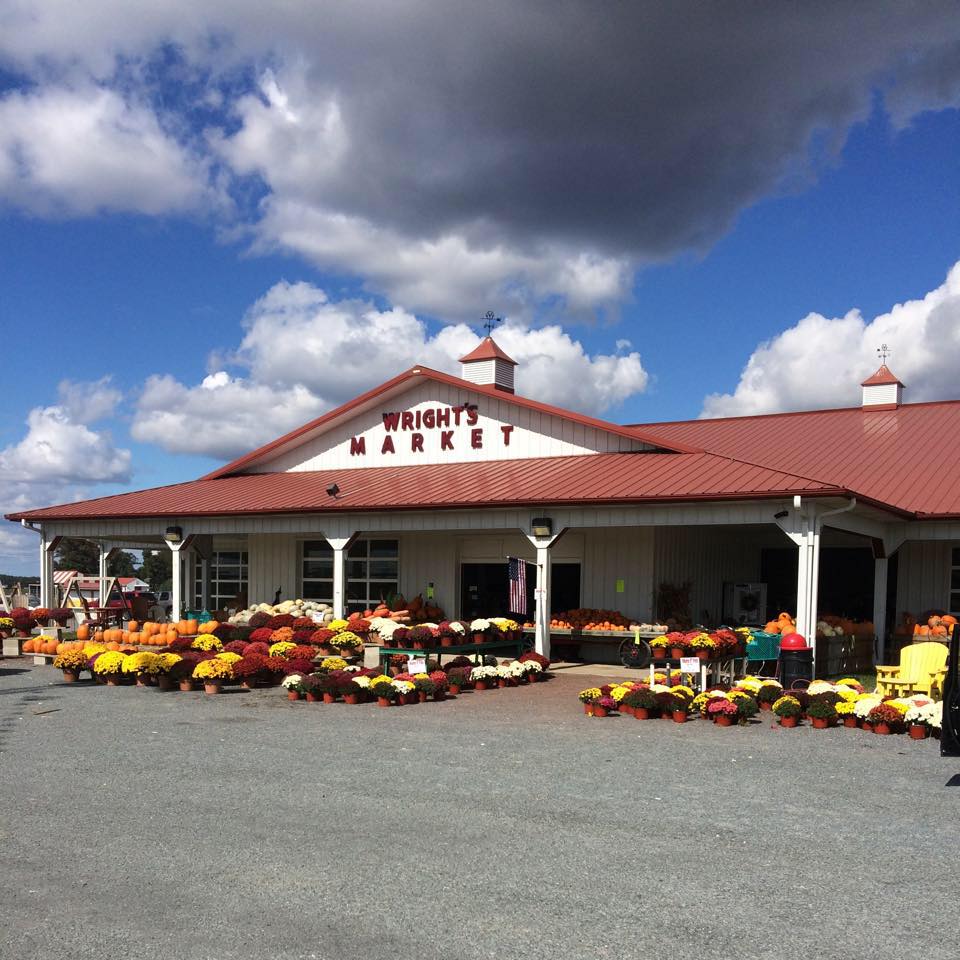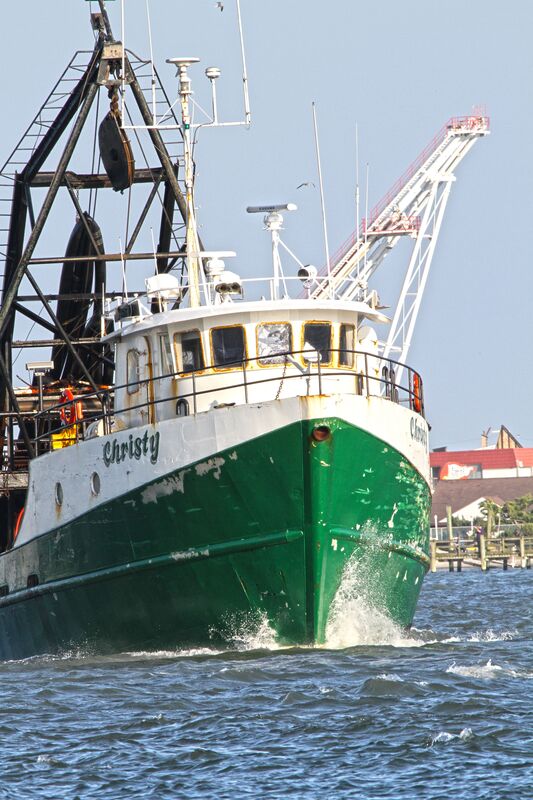Traditional Foods - An Overview
The Lower Shore has carved a distinct culinary niche over the last few centuries. Mixing a blend of influences from English, Native American, African American and other ethnic groups, the region offers food reflecting this varied heritage. Truly the words, "The Land of Pleasant Living" stretch into her abundance of food resources. Taste traditional foods at local restaurants or purchase local food in small town markets. Seafood is the culinary centerpiece of the Eastern Shore.
Blue Crabs, steamed or fried as soft shells, and oysters represent the most important regional seafood products. Try other local favorites such as stewed striped bass, fried croaker, sea trout or fresh caught flounder.
Order some crabcakes or clam fritters, served by many local restaurants. Expect to find fresh tuna, drumfish, raw oysters or muskrat on local menus. Wild ducks and geese stewed with dumplings have been served on Sundays for generations. Other seasonal delights are strawberries, peaches, corn and tomatoes. As the birthplace of the broiler industry, this region is one of the largest poultry-producing areas in the United States. A tasty variety of Eastern Shore cooking is best exemplified at the many festivals celebrating the region's bountiful seafood, agriculture or colorful lifestyles. They offer a culinary experience you will not soon forget.
Catch your own crabs, clams, or fish and have a cookout. All you need is some steamed corn, greens and Maryland fried chicken.
Sample some of the best seafood in Maryland at the J. Millard Tawes Annual Crab and Clambake held each July in Crisfield, or visit the annual Muskrat Dinner, held each spring in the town of Bivalve.
Blue Crabs, steamed or fried as soft shells, and oysters represent the most important regional seafood products. Try other local favorites such as stewed striped bass, fried croaker, sea trout or fresh caught flounder.
Order some crabcakes or clam fritters, served by many local restaurants. Expect to find fresh tuna, drumfish, raw oysters or muskrat on local menus. Wild ducks and geese stewed with dumplings have been served on Sundays for generations. Other seasonal delights are strawberries, peaches, corn and tomatoes. As the birthplace of the broiler industry, this region is one of the largest poultry-producing areas in the United States. A tasty variety of Eastern Shore cooking is best exemplified at the many festivals celebrating the region's bountiful seafood, agriculture or colorful lifestyles. They offer a culinary experience you will not soon forget.
Catch your own crabs, clams, or fish and have a cookout. All you need is some steamed corn, greens and Maryland fried chicken.
Sample some of the best seafood in Maryland at the J. Millard Tawes Annual Crab and Clambake held each July in Crisfield, or visit the annual Muskrat Dinner, held each spring in the town of Bivalve.
A Culinary Journey Through the Lower Shore
Sometimes in life, it's best to start with dessert. Let’s set a scene first: Picture yourself on a remote, history-laden island in the middle of the Chesapeake Bay. The boat trip out took 40ish minutes, full of sun-kissed scenery. Here on Smith Island, old-school workboats rumble out of harbors in pre-dawn darkness. The narrow streets are a stroller's dream. Waterfront vistas abound. The kayaking is to die for.
It’ll be easy to work up an appetite. At that point find your way to a down-home restaurant and order a slice of Smith Island Cake. It’s odd, the way the signature sweet in a tradition-bound place like this looks like a piece of abstract art in a New York City gallery. Twenty or so lines in precise, alternating colors. Cake, icing, cake, icing, cake, icing. Traditional chocolate alternates in yellow and brown, but other, brighter flavor/color combos have come into vogue lately.
No one knows who invented Smith Island Cake, or when. Maybe it dates to the late 1800s. Folklore ties the dish to the island's workmanlike ways: Wives made them for husbands heading out on weeklong oystering gigs. The sugar gave those overworked men a much-needed rush. The extra layers of icing helped the cake stay moist as days piled up.
Smith Island Cake’s rise to fame dates to the 1980s when local legend Frances Kitching published "Mrs. Kitching's Smith Island Cookbook." The book is pretty famous in culinary circles. Pretty much all the fancy food magazines have given Mrs. Kitching some love over the years. Smith Island Cake now ranks as the official state dessert of Maryland. Folks from all over the country order it by mail. You’ll understand the hullabaloo as you slide a forkful in your mouth and realize that this cake tastes like the sweetest of your childhood memories.
It’ll be easy to work up an appetite. At that point find your way to a down-home restaurant and order a slice of Smith Island Cake. It’s odd, the way the signature sweet in a tradition-bound place like this looks like a piece of abstract art in a New York City gallery. Twenty or so lines in precise, alternating colors. Cake, icing, cake, icing, cake, icing. Traditional chocolate alternates in yellow and brown, but other, brighter flavor/color combos have come into vogue lately.
No one knows who invented Smith Island Cake, or when. Maybe it dates to the late 1800s. Folklore ties the dish to the island's workmanlike ways: Wives made them for husbands heading out on weeklong oystering gigs. The sugar gave those overworked men a much-needed rush. The extra layers of icing helped the cake stay moist as days piled up.
Smith Island Cake’s rise to fame dates to the 1980s when local legend Frances Kitching published "Mrs. Kitching's Smith Island Cookbook." The book is pretty famous in culinary circles. Pretty much all the fancy food magazines have given Mrs. Kitching some love over the years. Smith Island Cake now ranks as the official state dessert of Maryland. Folks from all over the country order it by mail. You’ll understand the hullabaloo as you slide a forkful in your mouth and realize that this cake tastes like the sweetest of your childhood memories.
|
This slice of Chesapeake heaven is one stop in a larger landscape loaded with foodie-friendly fun. The Beach to Bay Heritage Area stretches from the Chesapeake Bay on the west to the famed oceanfront resort town of Ocean City on the east. In between: rich farmland, thick forests, winding rivers, and glorious small towns.
The culinary joys of this landscape are as multi-layered as a slice of Smith Island Cake. And like that cake, they're all rooted in the history and culture of the Chesapeake. Consider, for starters, the "Beautiful Swimmers”—that’s the title of William Warner's Pulitzer Prize-winning book about the Chesapeake blue crab. The town of Crisfield claims the title of Crab Capital of the World--for good historical reasons--but crabs abound in every corner of the lower Eastern Shore. You might find them in a backroads seafood shack, served steamed and spiced at a table covered oh so casually in craft paper. Or perhaps you'll meet them as a family, perched together at the edge of a pier while catching your own in "chicken-necker" fashion. Careful: The pincers can sting! |
|
Similarly, who knows what setting you’ll be in when you savor the crisp, buttery joy of fried soft-shell crabs. Out on a deck with a view? In a casual-as-can-be local diner? All gussied up amid white tablecloth elegance? No worries if you prefer to play it safe on the crab front: The crab cakes here are to die for.
That aforementioned oyster is another Beach to Bay staple, with a back story that dates to the days of only-in-the-Chesapeake sailing ships with exotic names—bugeye, skipjack, and pungy among them. You can dig into that history in local museums, or you can go straight to slurpin' ‘em down raw. That raw business makes some folks feel a little queasy, but no worries: You can get them grilled, fried, and baked, too. Pro tip: Don't pass on the oyster fritters if you find yourself at a small-town firefighters' carnival. The flavorful scenes keep coming one after another as you wander winding backroads and discover historic towns. Most of those towns have regular farmers markets where produce comes straight from local fields. On backroads and highways alike you’ll find roadside markets taking that same fresh approach. The springtime strawberries here are sweet little red miracles. Buy them by the pint, or head into the field to pick your own. Back at the turn of the 20th century little Marion Station billed itself as the "Strawberry Capital" of the country—again, for good historical reason. Tomatoes take center stage come summertime, followed by peaches. Little Berlin once boasted the biggest peach orchard in the country. That operation, Harrison Nurseries, marketed a variety of peach in the early 1900s named "Hale.” Trivia time: That's why Hale is the name of the town in the fictional Hollywood classic “Runaway Bride,” which was filmed in Berlin. |
|
Perhaps you've guessed by now how this rich mix of farmland, seafood, and deep culinary traditions is playing out in the 21st century. The combination is irresistible to chefs with a flair for farm-to-table and workboat-to-table cooking. Culinary talent abounds right now on the lower Eastern Shore. Some chefs are young up-and-comers. Others are proven veterans who tired of the big-city grind. Still others are locals who might once have felt a need to move away to advance a career.
They're all rooted here now, serving up one-of-a-kind dining experiences that showcase fresh and local approaches to American cuisine. This surge of creativity isn't just relegated to kitchens. Talented brewers, vintners, and distillers abound, too. You can easily pass a weekend hopping from tasting room to brewery tour to vineyard. Be warned, though: You'll have to make a return visit (or two) to hit them all. The festival approach is another option. The social calendar in the Beach to Bay Heritage Area is chock full of parties that celebrate local beers and libations. There are plenty of food festivals, too: The J. Millard Tawes Crab and Clam Bake, for instance, will be celebrating its 50th birthday soon. That September event is the largest annual seafood festival in Maryland. Wait, we didn't talk about those clams yet, did we? Or the rockfish served straight out of the Bay and its rivers. Or the ocean harvests--tuna, scallops, shrimp, flounder, even local lobster. You can watch those catches come in while strolling a vibrant working harbor in West Ocean City. The restaurants near there all pride themselves on a commitment to fresh ocean goodness. Bottom line: Whatever your tastes, you'll be able to craft a perfect culinary adventure on Maryland's lower Eastern Shore. Best of all, you might just fall along the way for the natural, cultural, and historical joys of the place, too. The best way to get going on planning an itinerary is at this site: https://www.beachesbayswaterways.org/ |
Organic Farming
Organic farming is on the rise across the United States and across the world. Worldwide Opportunities on Organic Farms (WWOOF) is just one organization promoting the organic farming experience with the mission of promoting an educational and cultural exchange and building a global community conscious of ecological farming practices. USDA certified organic foods meet several guidelines, such as soil quality, pest and weed control, as well as living conditions for animals.
Organic farming has several benefits for both people and the environment. Synthetic pesticides and fertilizers used in conventional agriculture tend to negatively impact the environment through runoff, making it into nearby bodies of water and affecting other animals that live in or around it. Not only are these toxic, but they can also create "dead zones" in the water, greatly impacting our fish populations. The Chesapeake Bay in particular notoriously has a large dead zone. Organic farming seeks to limit the environmental impact of pesticides and fertilizers by using alternative methods such as crop rotation and manure. This limits the amount of toxic chemicals that get introduced into the food chain. Generally speaking, organic farming and foods tend to be more sustainable by reducing energy usage, carbon emissions, and reducing our contact with toxic chemicals. However, organic farming also has some draw backs, such as requiring more land to make up for lower crop yields. To learn more about the pros and cons, check out some of the links below:
https://news.climate.columbia.edu/2020/02/05/organic-sustainable-food/
https://www.ams.usda.gov/grades-standards/organic-standards
https://rodaleinstitute.org/why-organic/organic-basics/organic-vs-conventional/
Organic farming has several benefits for both people and the environment. Synthetic pesticides and fertilizers used in conventional agriculture tend to negatively impact the environment through runoff, making it into nearby bodies of water and affecting other animals that live in or around it. Not only are these toxic, but they can also create "dead zones" in the water, greatly impacting our fish populations. The Chesapeake Bay in particular notoriously has a large dead zone. Organic farming seeks to limit the environmental impact of pesticides and fertilizers by using alternative methods such as crop rotation and manure. This limits the amount of toxic chemicals that get introduced into the food chain. Generally speaking, organic farming and foods tend to be more sustainable by reducing energy usage, carbon emissions, and reducing our contact with toxic chemicals. However, organic farming also has some draw backs, such as requiring more land to make up for lower crop yields. To learn more about the pros and cons, check out some of the links below:
https://news.climate.columbia.edu/2020/02/05/organic-sustainable-food/
https://www.ams.usda.gov/grades-standards/organic-standards
https://rodaleinstitute.org/why-organic/organic-basics/organic-vs-conventional/
Organic Farming Experiences on the Eastern Shore:
Organic farming is becoming increasingly popular on the Shore as well. Chesapeake Organic in Marion Station is a certified organic farm in Somerset County offering organic produce to visitors. In Wicomico County, Groundworks Farm makes it easy to eat local organic food through their Community-Supported Agriculture (CSA) farm share model. This gives their farmers a much needed cash investment at the start of the growing season and gives investors a wide assortment of organic goods. Most of their shares are designed to supply a 3-5 person household. Looking to do some farming of your own? The University of Maryland Eastern Shore often offers farming workshops so keep an eye out for those!
Double D Ranch, located in Salisbury Maryland, is an organic farm that has been practicing permaculture for three generations. They offer a variety of organic animal products such as beef, chicken, pork, turkey, and eggs. Orders are by appointment only.
Organic farming is becoming increasingly popular on the Shore as well. Chesapeake Organic in Marion Station is a certified organic farm in Somerset County offering organic produce to visitors. In Wicomico County, Groundworks Farm makes it easy to eat local organic food through their Community-Supported Agriculture (CSA) farm share model. This gives their farmers a much needed cash investment at the start of the growing season and gives investors a wide assortment of organic goods. Most of their shares are designed to supply a 3-5 person household. Looking to do some farming of your own? The University of Maryland Eastern Shore often offers farming workshops so keep an eye out for those!
Double D Ranch, located in Salisbury Maryland, is an organic farm that has been practicing permaculture for three generations. They offer a variety of organic animal products such as beef, chicken, pork, turkey, and eggs. Orders are by appointment only.

